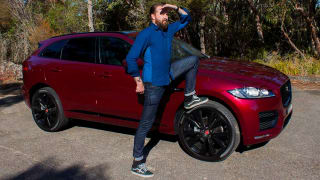
Jaguar F-Pace R-Sport 20d 2016 review
Richard Berry road tests and reviews the 2016 Jaguar F-Pace R-Sport 20d with specs, fuel consumption and verdict.
Browse over 9,000 car reviews
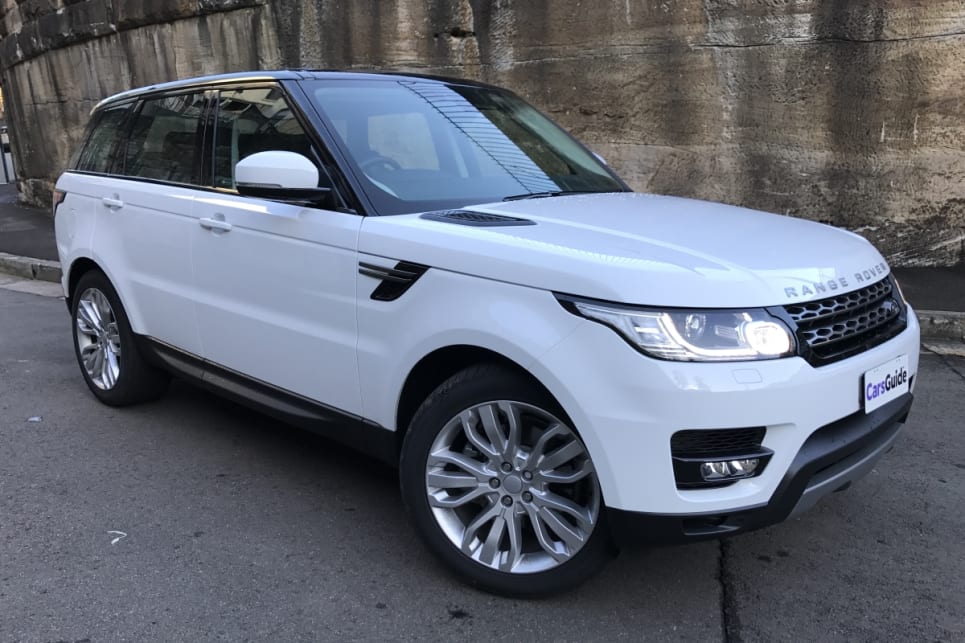
Range Rover was once a vehicle, suitable for transporting Golden Retrievers, Hermès blankets, and wicker picnic baskets. Now it’s an iconic umbrella brand, sitting above an ever-expanding portfolio of luxurious and off-road capable SUVs.
The full-size SV Autobiography is a supercharged V8 mothership, giving $400k a serious nudge, while at the other end of the spectrum, an entry-level Evoque gains you membership to Club Range Rover for roughly an eighth of that price.
In between sits the recently launched, mid-size Velar, and the Range Rover Sport. As the name implies, the latter is an agile, five and seven-seater, designed to satisfy those who see corners as an opportunity rather than an impediment.
Until recently, Range Rover Sport engine options were limited to six or eight cylinders arranged in a V, with turbos or superchargers brazenly attached.
But the insertion of a 2.0-litre, four-cylinder, turbo-diesel engine has broadened customer choice and reintroduced a sub-$100k entry-point to the high-dollar, high-class Sport range.
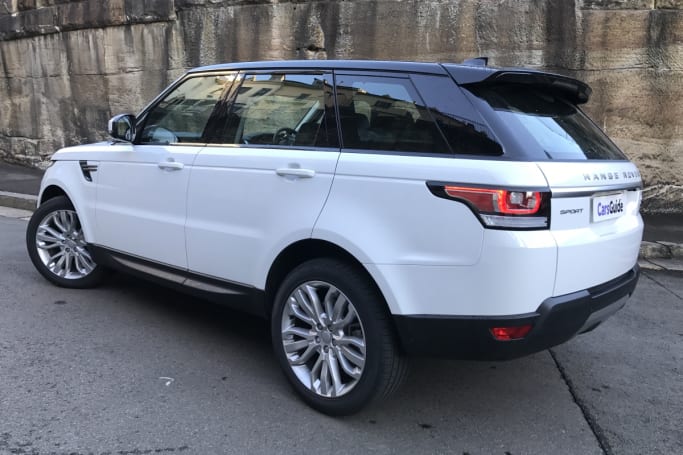
The question is, does this engine option meet the lofty standards set by its more macho and prestigious siblings?
| Land Rover Range Rover Sport 2017: SD4 S | |
|---|---|
| Safety rating | |
| Engine Type | 2.0L turbo |
| Fuel Type | Diesel |
| Fuel Efficiency | 6.5L/100km |
| Seating | 5 seats |
| Price from | $54,010 |
The compact Evoque was clearly a design turning point for Range Rover. Its launch, in 2008, coincided with Land Rover’s transfer of ownership from a GFC-stricken Ford, to Indian automotive giant, Tata.
A subsequent in-flow of funds and a new level of operating autonomy allowed Land Rover design director Gerry McGovern to push a future-focused concept from the floor of the Geneva motor show to full production, virtually unchanged. It was a stunning achievement, and a sales success.
The Range Rover Sport wears all the hallmarks of what has since evolved into a distinctive and enduring design language.

At 4.85m long, it’s shorter overall than many of its competitors, but a substantial 2.9m wheelbase delivers a planted ‘wheel at each corner’ stance, not to mention generous interior space.
The combination of a steeply raked windscreen and xenon headlights that look like a wind tunnel has smeared them around the corner of the front guards, give this large beast a sleek and superbly unified look. A drag coefficient of 0.34 is an impressive figure for such an upright vehicle.
Signature elements like the clamshell bonnet, with Ranger Rover script proudly adorning its leading edge, as well as the slope of the roofline, and the ratio of glass to sheetmetal, subtly echo the 1970 original, while being roughly 1000 times more desirable.
The profile is clean and simple, with long, horizontal character lines neatly segmenting the doors and flanks.
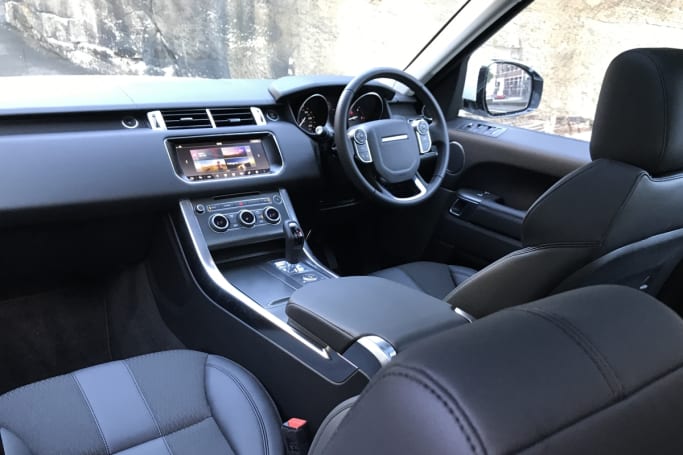
The rear bookends the nose, with a familiar, elongated treatment applied to the tail-lights, housing characteristic key-line LED lamps. And just in case you forget which car you’re driving, the classic Range Rover lettering spans the cargo door (again, as per the first-generation Rangie).
A minimalist interior reflects the Range Rover design team’s determination to reduce complexity, with a 10.2-inch touchscreen taking on many of the functions otherwise controlled by switches and dials.
The buttons and knobs remaining are largely connected to heating and ventilation, not to mention turning the car on and off.
Serene calm and an understated premium feel are the result. A mix of vinyl and cloth is beautifully trimmed around the seats and doors, with brushed-metal elements on the centre-console, doors, instruments and steering wheel adding just the right amount of lustre. The only letdown is scratchy, bargain-basement carpet.
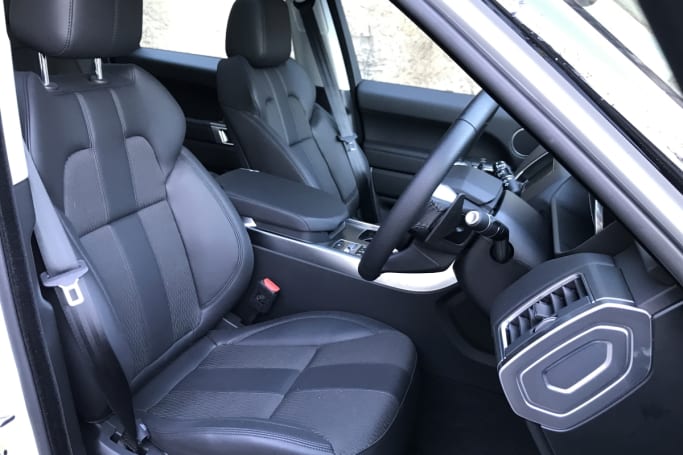
Not surprisingly, there’s hectares of space on offer in the front of the Sport, with healthy door apertures making entry and egress easy.
But in setting an appropriate seating position, the first (intensely annoying) hurdle is attempting to push your hand into a position where it can get enough purchase on the backrest adjuster wheel to actually shift it.
Its positioning, tightly wedged between the seat and the B-pillar, is what they call in the trade, ‘a monumental cock-up’, unless you have elf hands. During our test, anyone sitting in the front seats had to get out, slide their chair forward, and adjust the backrest angle from beside the car. It looks and feels like an afterthought.
Once you’ve managed to set the seat up, though, there’s plenty of storage space on offer, with two big cupholders in the centre console, a decent glove box, and a lidded storage bin between the seats.
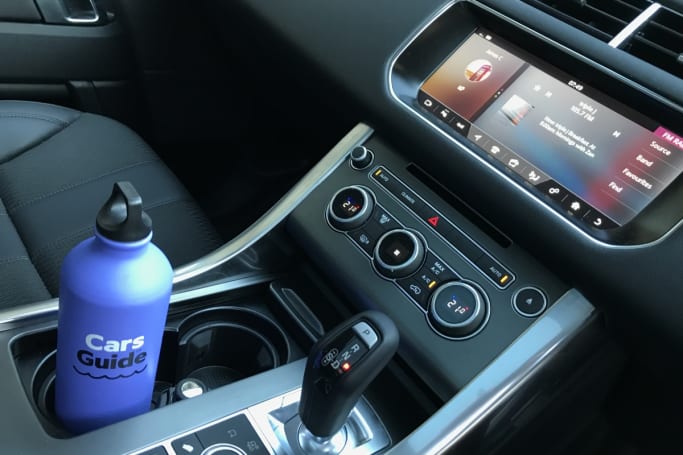
There are also two 12-volt sockets and a pair of USB ports. But don’t try slipping your drink bottle into the door pockets, they’re not shaped to accommodate them.
Sitting behind the driver’s seat, set for my 183cm frame, head and legroom are good, and the Sport is genuinely wide enough that three full-size humans can sit across the rear seat without a crush.
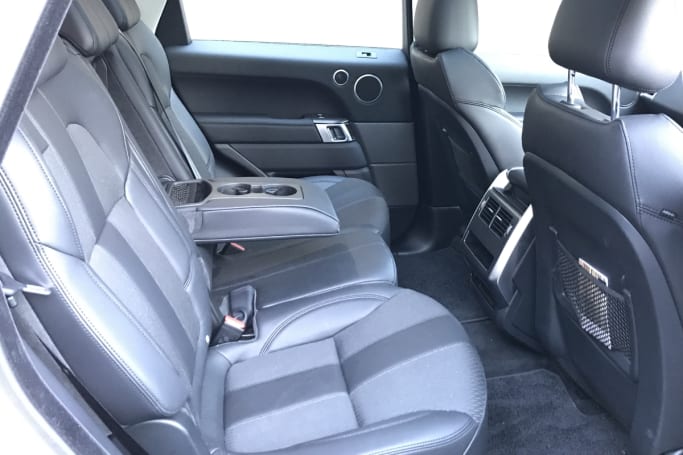
There's a big tick for controllable air vents for back seaters, as well as a 12-volt outlet, plus two cupholders and a netted oddments tray in the fold-down centre armrest. There are also mesh map pockets on the back of the front seats, and bottle-sized bins in the doors.
With the 60/40 split folding rear seats upright, cargo volume is a handy 784 litres, which grows to a mammoth 1761 litres when they’re folded forward.
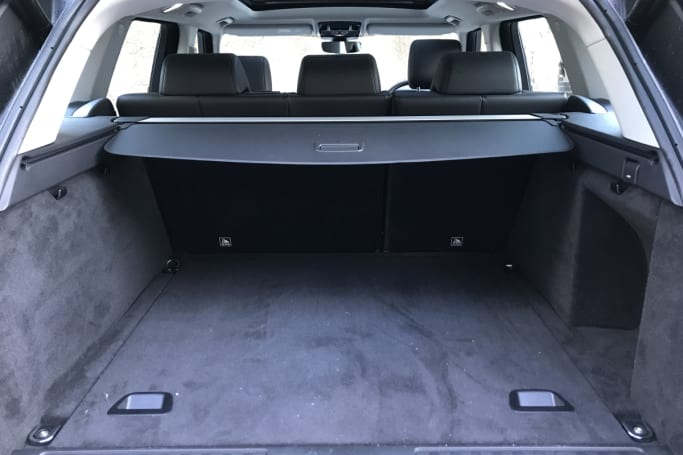
There’s another 12-volt socket back there, as well as four tie-down points, four shopping bag hooks, a pull-out load space cover, and proper lighting. The optional auto ‘Gesture Tailgate’ fitted to our test car proved itself in arms-full situations, and a full-size alloy spare lives under the floor.

The Sport SD4 S effectively replaces the TDV6 S, dropped from the Australian market in August last year, and at $90,900, instantly becomes the most economical way into the line-up.
That’s a modest price tag by Range Rover Sport standards, but still a solid number, and not surprisingly, there’s plenty of standard equipment included.

Boxes ticked include rain-sensing wipers, power windows with ‘Global Close’ function, heated door mirrors, auto headlights, rear fog lights, xenon headlights with LED DRLs, 19-inch alloy wheels (with full-size alloy spare), leather-trimmed steering wheel (with multi-function controls), dual zone climate control air, interior mood lighting, push-button (keyless) start, front ‘Park Distance Control’, rear park distance sensors, reversing camera (with 180 degree view), cruise control, 10.2-inch touch, ‘InControl Touch Pro’ sat nav, 250W, eight-speaker audio (no Apple CarPlay or Android Auto, though), and a 5.0-inch TFT colour instrument display.
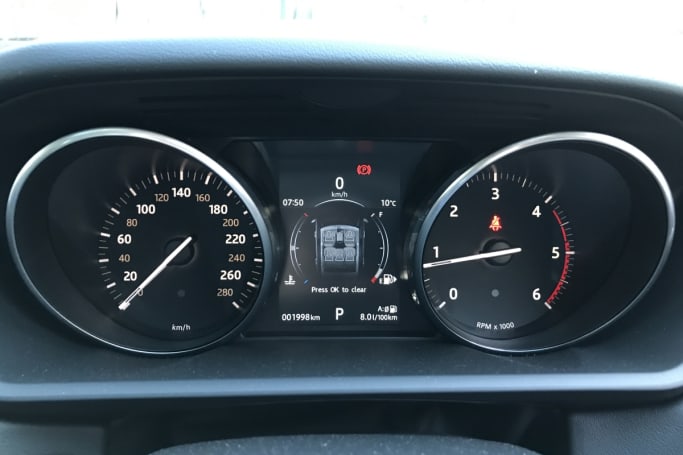
‘Our’ test vehicle showcased a raft of available options, including the $5500 ‘Off Road Pack’, which bundles together ‘Terrain Response’, the ‘Twin-Speed’ (high/low range) transfer box, ‘All Terrain Progress Control’ (ATPC), ‘4-Corner’ electronic air suspension, and ‘Adaptive Dynamics’.
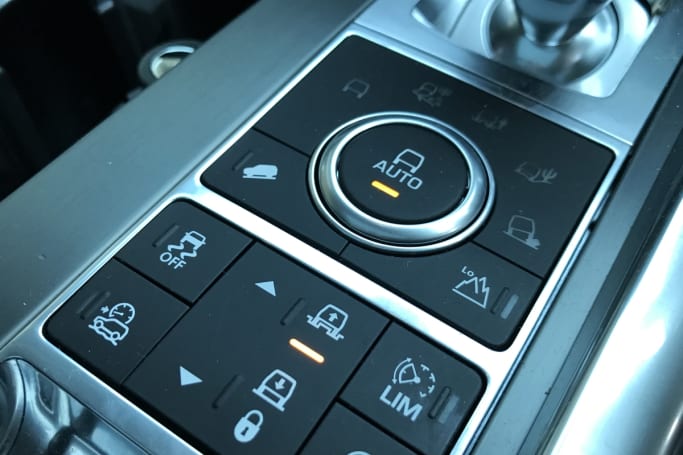
It was also loaded up with the ‘S Convenience Pack’, which includes heated, folding exterior mirrors with approach lamps, auto-dimming interior mirror, keyless entry, and the ‘Gesture Tailgate’, for $4520.
Add a ‘Panoramic Roof’ with powered blind ($4330), 21-inch ‘Style 507’ alloy rims (normally found on the higher grade HSE model -($4120), plus a black contrast roof ($1440), and all up, you’re looking at $110,810 (plus on-road costs).
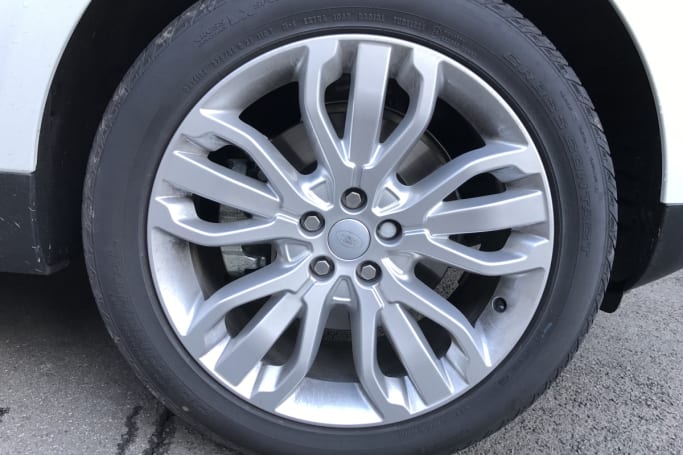
The Sport SD4 S is powered by Jaguar Land Rover’s all-alloy, twin-turbo, four-cylinder ‘Ingenium’ diesel engine, with a number of tech tricks up its sleeve, including computer-controlled, adaptive cooling, and decoupled injectors, claimed to reduce vibration and noise intrusion.
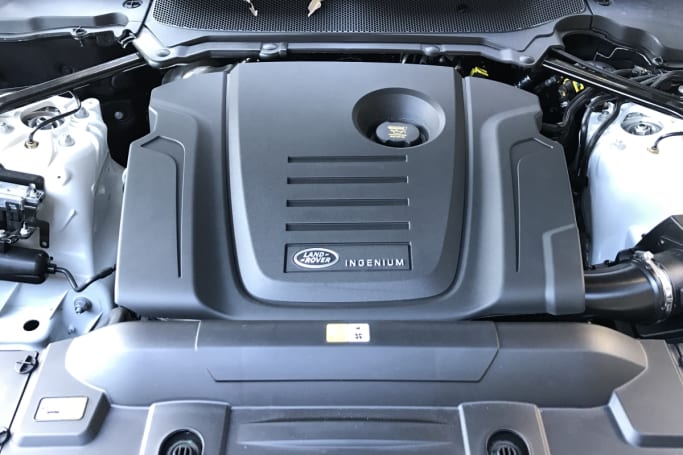
It develops 177kW, and maximum torque of 500Nm (with both peaks arriving at the same 4000rpm), and is backed up by an eight-speed automatic transmission, with wheel-mounted paddle shifters.
Drive goes to all four wheels (permanently) via a single speed (high-range only) transfer case.
Land Rover claims the Range Rover Sport SD4 S consumes 6.2L/100km for the combined (urban, extra-urban) fuel economy cycle, emitting 164g/km of CO2 in the process.
Over 600km of city, suburban, and lots of freeway running, we saw a dash-indicated average of 8.1L/100km.
A tank capacity of 74 litres translates that figure to a range in excess of 900km.
Settling behind the wheel of a Range Rover Sport, it’s hard not to enter some kind of Pavlovian state, salivating at the thought of thrust-worthy, high-output V6 and V8 engines. And the aural signature of a 2.0-litre turbo-diesel four, more often connected with the Sport’s diminutive Evoque sibling, feels strangely incongruous.
But don’t judge a mechanical book by its acoustic cover. The Sport is sprightly and willing, with 0-100km/h taking a claimed 8.3 seconds.
The eight-speed auto helps the engine stay in its peak power and torque bands, and manual shifts (claimed to be completed in 200 milliseconds) are rapid.
Five up on the freeway, the 2.1-tonne SD4 S maintained momentum without fuss, with enough in reserve for confident overtaking. The seats front and rear proved comfy over long hauls, and it’s surprisingly quiet.
Variable ratio electric power steering manages to combine light weight with good road feel, and the big body remains well buttoned down in tight cornering. Ride comfort is fine on all but the most pock-marked surfaces.
Braking is by ventilated discs front (360mm) and rear (350mm), which is handy because the SD4 S can tow 750kg of unbraked trailer, and 3500kg with brakes on board. The allowable tow ball weight is 200kg, with a maximum vehicle and trailer combination of 6400kg, plus 100kg on the roof.
And as usual, the Land Rover badge is your passport to off-roading pleasure with the ‘Terrain Response Dynamic Program’ offering multiple modes (plus an auto setting) to cope with a range of off-highway conditions. Factor in ‘Hill Descent Control’ and you’re ready for anything.
Keen adventurers will also be pleased to know the off-road height is 278mm (standard – 213mm), wading depth with electronic air suspension is 850mm (coil springs – 800mm), the approach angle is 33.0 degrees, ramp/break-over is 27.2, and departure is 31.0 degrees.
One thing that didn’t thrill us was the cruise control’s apparent inability to retard speed off throttle down hills. Surprising.
Basic Warranty
3 years / 100,000 km warranty
ANCAP Safety Rating

It may be the entry point to the Range Rover Sport range, but the SD4 S scores major points in terms of active and passive safety tech.
A lengthy list of active features includes, ABS, ‘Cornering Brake Control’, DSC, EBD, EBA, ‘Electronic Traction Control’, ‘Gradient Acceleration Control’, ‘Gradient Release Control’, and ‘Roll Stability Control’.
The list also takes in AEB, ‘Lane Departure Warning’, ‘Trailer Stability Control’, a reversing camera, and hazard lights that fire up under heavy braking.
And if, despite all of the above, a collision is unavoidable, dual front airbags, dual front side airbags and side curtain bags (covering front and second row occupants) are standard. There are also three top tether points for child restraints across the back seat, with ISOFIX anchors on the two outer positions.
The Range Rover Sport hasn’t been assessed by ANCAP or EuroNCAP for safety performance.
Land Rover supports the Range Rover Sport with a three-year/100,000km warranty, with 24-hour roadside assistance provided for the duration.
Recommended service interval is 12 months or 16,000km, and a 'Land Rover Service Plan' offers scheduled servicing for up to five years or 100,000km.
While it doesn’t feel as overtly luxurious as its higher spec siblings (yes, corners have been cut on materials), the Range Rover Sport SD4 S is a well-equipped five-seater that’s enjoyable to drive, nicely put together and still looks great. Its ‘Ingenium’ turbo-diesel four gets the job done, and the list of standard safety features is long. A smart package.
| Vehicle | Specs | Price* | |
|---|---|---|---|
| SD4 S | 2.0L, Diesel, 8 SP AUTO | $54,010 – 62,040 | 2017 Land Rover Range Rover Sport 2017 SD4 S Pricing and Specs |
| SC SVR | 5.0L, PULP, 8 SP AUTO | $138,380 – 159,060 | 2017 Land Rover Range Rover Sport 2017 SC SVR Pricing and Specs |
| SDV6 HEV A/B DYN Hybrid | 3.0L, Hyb/Diesel, 8 SP AUTO | $111,540 – 128,150 | 2017 Land Rover Range Rover Sport 2017 SDV6 HEV A/B DYN Hybrid Pricing and Specs |
| SDV8 HSE Dynamic | 4.4L, Diesel, 8 SP AUTO | $79,200 – 91,080 | 2017 Land Rover Range Rover Sport 2017 SDV8 HSE Dynamic Pricing and Specs |
| Design | 8 |
|---|---|
| Practicality | 7 |
| Price and features | 8 |
| Under the bonnet | 7 |
| Efficiency | 7 |
| Driving | 8 |
| Safety | 9 |
| Ownership | 7 |
$38,979
Lowest price, based on 66 car listings in the last 6 months